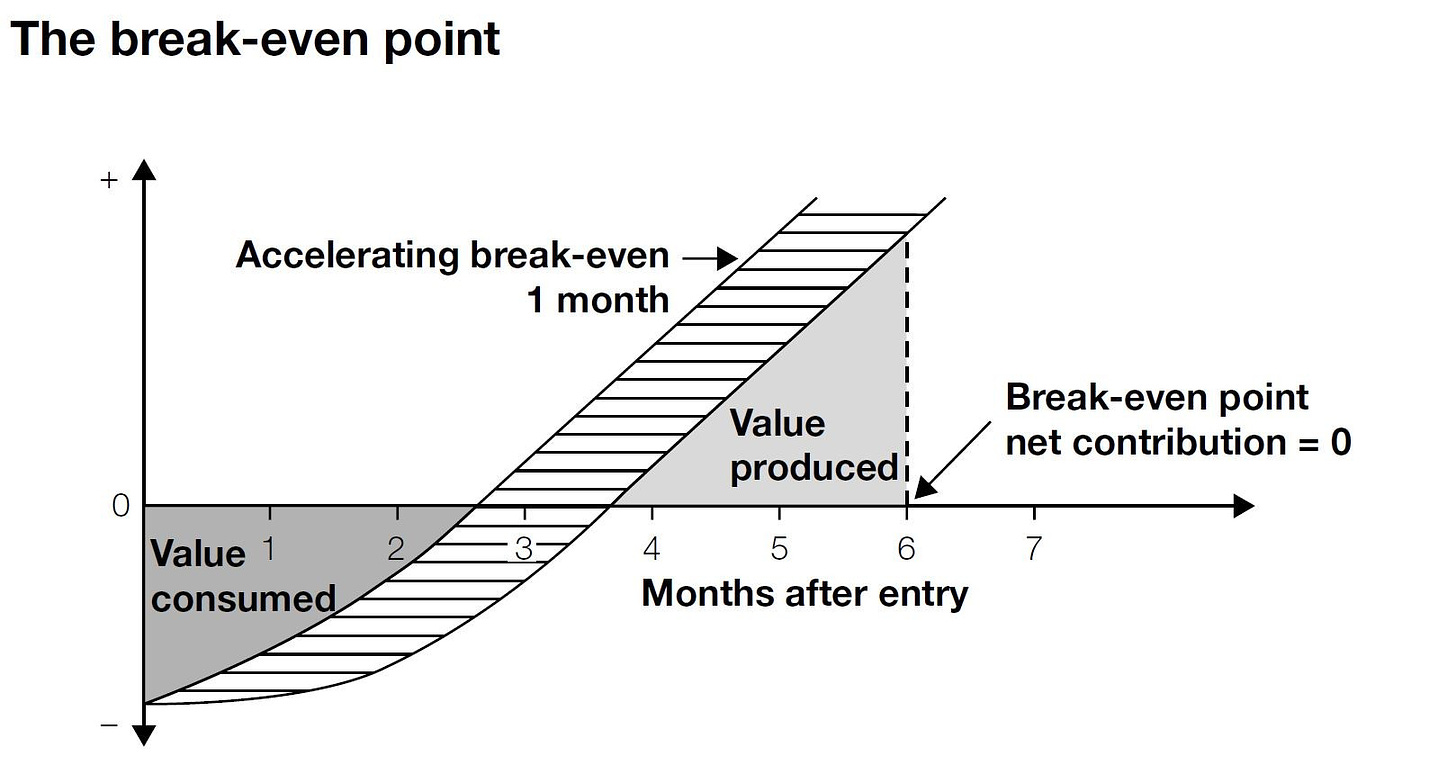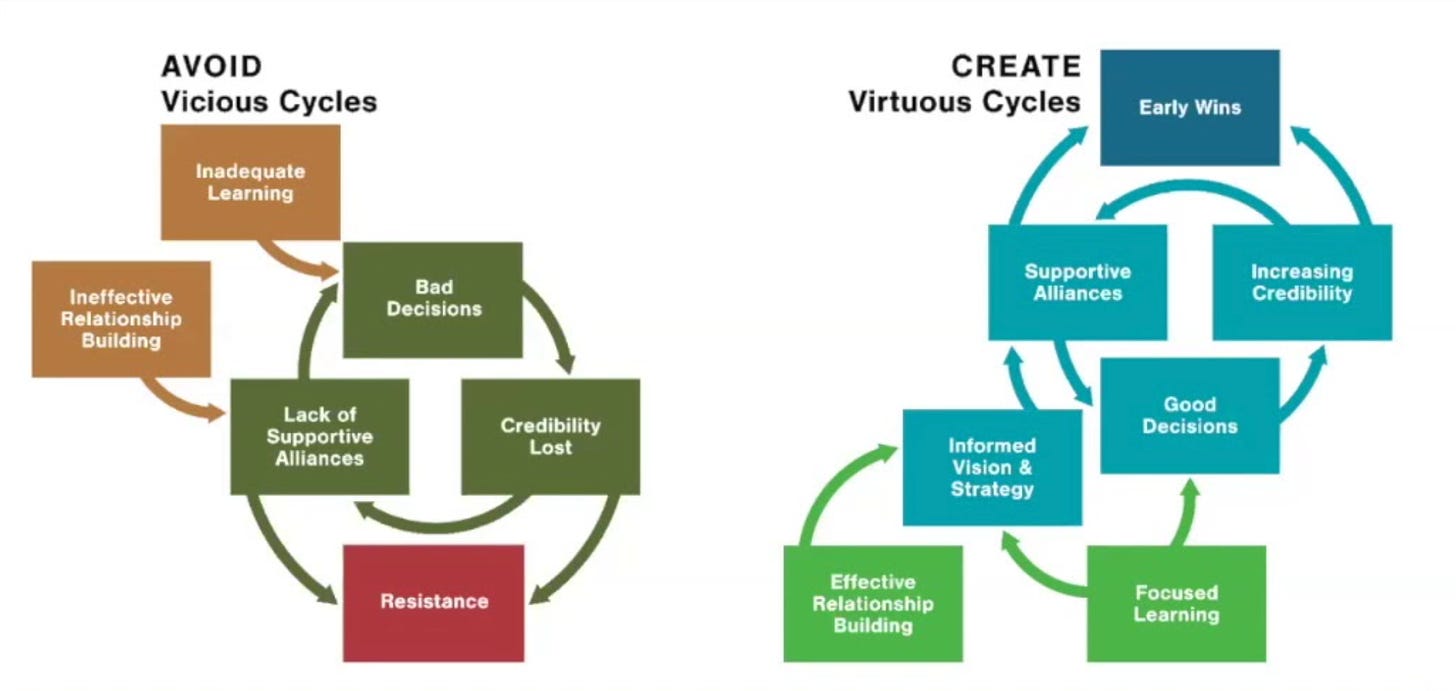Thank you for being part of this newsletter. Each week, I share playbooks, case studies, stories, and links from inside the startup marketing world. You can click the heart button 💙 above or below to share some love. And you can reach out to me anytime at hello@kevanlee.com. I’d love to hear from you.
Links that are worth your time:
Empathy mapping as a persona exercise
Hi there 👋
I am not yet halfway through my first 90 days on my new job at Polly, which is probably for the best since I’ve only just now finished the book The First 90 Days (meaning I still have time to re-do all the things I failed to do at the start). As with past books like Alchemy and Obsessed, I’m happy to share my Kindle highlights and takeaways. See below. Plus, I’ve added some other thoughts and advice I’ve been given about starting fresh at a new job.
Wishing you a great week,
Kevan
How to spend your first 90 days at a new job
The most common advice I’ve heard when starting a new job is to create a 30-60-90-day plan for yourself. There are a ton of great blog posts written about it (this one by Andrew Capland of Postscript is one of my favorites).
Rather than showing-up and figuring it out as you go, come in with a plan already in place so you can deliver value from day one.
Interestingly enough, on the hiring team at Buffer, we would create this 30-60-90 plan ourselves and then give it to each new hire. At least in early-stage startups, this seems rare. It’s more often the case that you’ll be creating the plan yourself.
Learn → Build → Deliver
When I’m creating a 30-60-90 plan, I typically arrange the plan around three themes:
Learn
Build
Deliver
Learning in the first 30 days, Building in the next 30 days, and Delivering in the final 30.
Depending on the stage of the company and the immediacy of the role, you can speed up the timeline or allow the themes to overlap, but generally I’ve found that this type of sequence works well for making meaningful impact by Day 90.
And — just like we did at Buffer — I do still try to create this 30-60-90 plan for my new teammates. After all, as their manager, I am invested in their success at the company. Why not give them the best start possible? Here’s a sample 30-60-90 I created for a customer marketing role at Polly recently.
The 4 focuses of a new hire
In speaking with a lot of folks prior to joining Polly, I connected the dots on some similar themes that kept coming up. Adam Grenier (Reforge, ex-Lambda School) had this great way of articulating it:
As a new leader, I'm investing in infrastructure, development, experimentation, and firefighting
How you allocate your time across those four focuses depends a lot on the area that you’re inheriting.
For instance, in an ideal world, you’re spending most of your time on development and experimentation. But you can’t do that until your foundation is solid and things aren’t on fire.
Ideally:
Reality in your first 90 days:
At least initially, a lot of your time will be spent on firefighting and infrastructure. The two are closely related: Fires often flourish because of a lack of infrastructure. But over time, you’ll begin to shift toward the long-term work of developing your team / area and experimenting to get better. There may be periods where you over-index on infrastructure initially.
Notes from The First 90 Days
These are my Kindle highlights and main takeaways from The First 90 days by Michael Watkins.
—
Your goal in every transition is to get as rapidly as possible to the break-even point. This is the point at which you have contributed as much value to your new organization as you have consumed from it.
The average time to reach the break-even point is 6.2 months.
—
Common traps with starting a new role:
Sticking with what you know. You believe you will be successful in the new role by doing the same things you did in your previous role, only more so.
Falling prey to the “action imperative.” You feel as if you need to take action, and you try to hard, too early to put your own stamp on the organization. You are too busy to learn, and you make bad decisions and catalyze resistance to your initiatives.
Engaging in the wrong type of learning. You spend too much time focused on learning about the technical part of the business and not enough about the cultural and political dimensions of your new role.
Neglecting horizontal relationships. You spend too much time focused on vertical relationships — up to the boss and down to direct reports — and not enough on peers and other stakeholders.
—
—
Fundamental principles of beginning a new role:
Accelerate your learning. You need to climb the learning curve as fast as you can in your new organization. You must be systematic and focused about deciding what you need to learn and how you will learn it most efficiently. Learning about a new organization can feel like drinking from a fire hose.
Match your strategy to the situation. A clear diagnosis of the situation is an essential prerequisite for developing your action plan.
Secure early wins. Early wins build your credibility and create momentum. They create virtuous cycles that leverage the energy you put into the organization to create a pervasive sense that good things are happening.
Create coalitions. Your success depends on your ability to influence people outside your direct line of control. Start right away to identify those whose support is essential for your success.
—
Transition Risk Assessment
—
The culture pyramid
—
Identifying cultural norms
The following domains are areas in which cultural norms may vary significantly from company to company. Transitioning leaders should use this checklist to help them figure out how things really work in the organizations they’re joining:
Influence. How do people get support for critical initiatives?
Meetings. Are meetings filled with dialogue on hard issues, or are they simply forums for publicly ratifying agreements that have been reached in private?
Execution. When it comes to getting things done, which matters more — a deep understanding of processes or knowing hte right people?
Conflict. Can people talk openly about issues without fear of retribution? Or do they avoid conflict?
Recognition. Does the company promote stars, rewarding those who visibly and vocally drive business initiatives? Or does it encourage team players, rewarding those who lead authoritatively but quietly and collaboratively?
Ends versus means. Are there any restrictions on how you achieve results? Does the company have a well-defined, well-communicated set of values that is reinforced through positive and negative incentives?
—
When you are diagnosing a new organization, start by meeting with your direct reports one-on-one. Ask them essentially the same five questions:
What are the biggest challenges the organization is facing (or will face in the near future)?
Why is the organization facing (or going to face) these challenges?
What are the most promising unexploited opportunities for growth?
What would need to happen for the organization to exploit the potential of these opportunities?
If you were me, what would you focus attention on?
—
New Leader Assimilation at GE
New manager / new role gets assigned a transition facilitator. The facilitator meets first with the new leader to lay out the process. This is followed by a meeting with the leader’s new direct reports in which they are asked questions such as, What would you like to know about the new leader? What would you like her/him to know about you? About the business situation? The main findings are then fed back, without attribution, to the new leader. The process ends with a facilitated meeting between the new leader and the direct reports.
—
Build a productive relationship with a new boss
Don’t stay away. If you have a boss who doesn’t reach out to you, you will have to reach out yourself.
Don’t surprise your boss.
Don’t approach your boss with only problems. You need to have plans for how you will proceed.
Don’t run down your checklist. Assume she/he wants to focus on the most important things you’re trying to do and how she/he can help. Don’t go in without at most three things you really need to share or on which you need action.
Don’t expect your boss to change.
Clarify expectations early and often.
Take 100 percent responsibility for making the relationship work.
Negotiate time lines for diagnosis and action planning.
Aim for early wins in areas important to the boss.
Pursue good marks from those whose opinions your boss respects.
—
Yerkes Dodson human performance curve
About this newsletter …
Each week, I share playbooks, case studies, stories, and links from inside the startup marketing world. If you enjoy what’s in this newsletter, you can share some love by hitting the heart button at the top or bottom.💙
About Kevan
I’m a marketing exec who specializes in startup marketing and brand-building. I currently lead the marketing team at Polly (we’re hiring!). I previously built brands at Buffer and Vox.
Not subscribed yet? No worries.
I send a free email every week or so. You can check out the archive, or sign up below:
Already subscribed? You’re in good company …
I’m lucky to count thousands of subscribers as part of this list, including folks from awesome tech companies like these:
Thank you for being here! 🙇♂️













